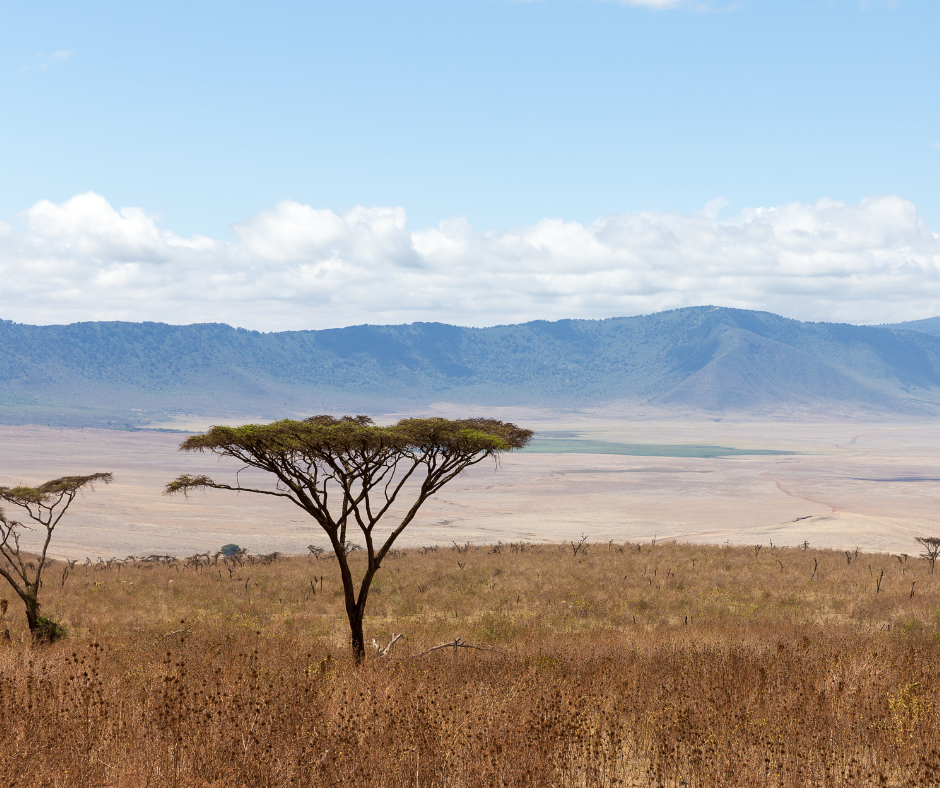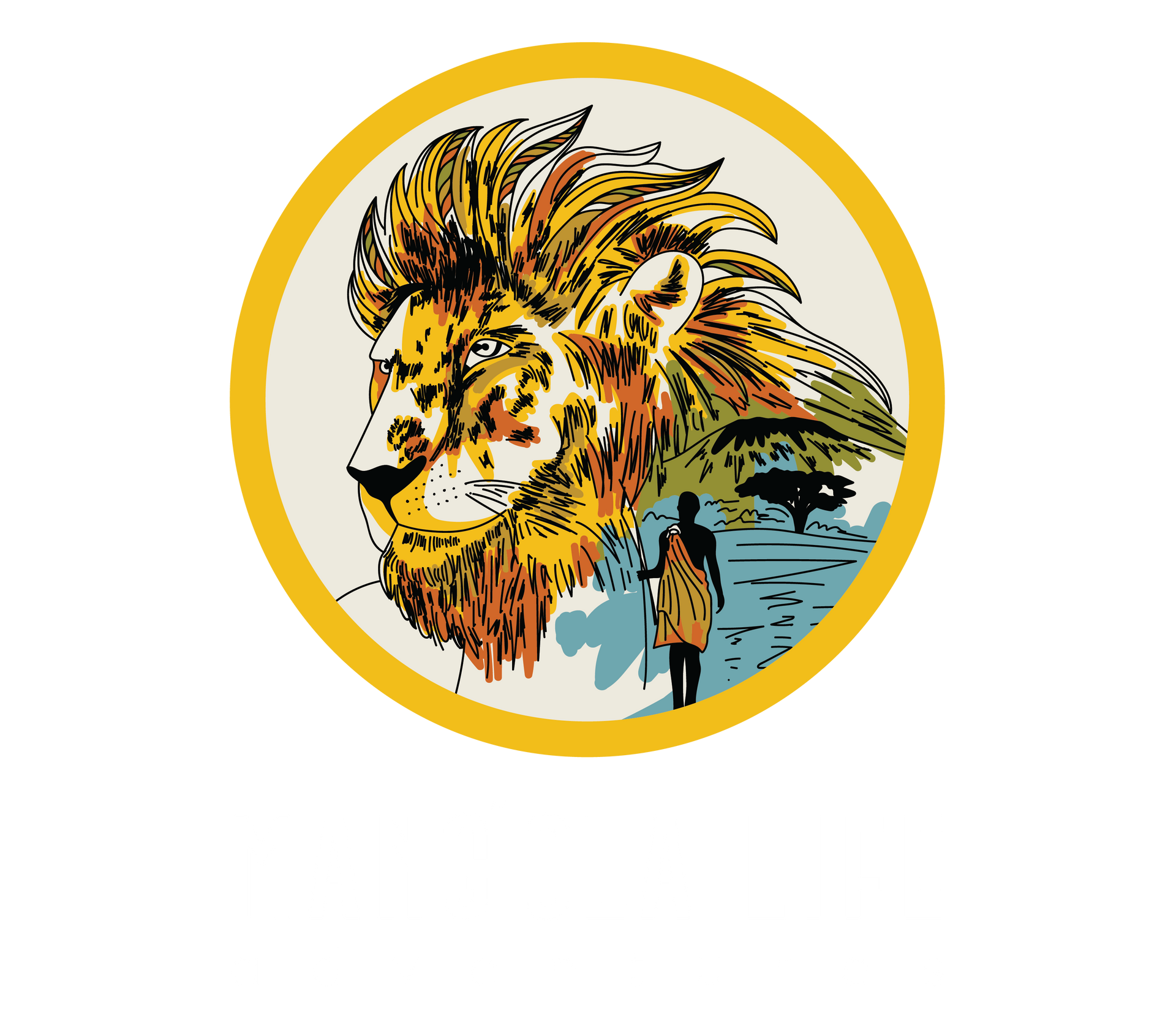The ultimate guide to the Ngorongoro Conservation Area: Wildlife, wonders, and where to stay
Ngorongoro, a place that changes you
You didn't come to the Ngorongoro Conservation Area just to check off animals from a list.You came because something more profound is calling. Maybe it's a longing for awe. Perhaps it's the desire to witness nature in its purest form, untamed, unfiltered, and alive. Maybe, just maybe, it's because you're searching for a kind of travel that reconnects you to something ancient. Something sacred.
That kind of journey doesn't happen by accident. It occurs in places like the Ngorongoro Conservation Area, where lions sleep in craters carved by time, elephants share ancient paths with Maasai herders, and the air hums with a kind of reverence you can't quite name.
But here's the thing: visiting Ngorongoro isn’t just about seeing it. It’s about entering into a relationship with the land, the people, and the stories that have shaped this place long before we arrived.
This guide is more than logistics and lists. It's a love letter to Ngorongoro's wonders, a map for traveling consciously, and an invitation to slow down and see deeply. Let's begin.
And that's precisely what we believe in.
At Mang'ola Life, we're not just offering a route through Tanzania. We're a sustainable safari companyrooted in regeneration, ancestral knowledge, and intentional experiences that honor both land and people.
Whether you're here to witness wildlife, walk alongside local guides, or simply remember your place in the natural world, you're in the right place.
What makes the Ngorongoro Conservation Area so special?
A living landscape of coexistence
There are few places on Earth where wildlife, geology, and human culture weave together as seamlessly as they do in the Ngorongoro Conservation Area. Recognized as a UNESCO World Heritage Site, this region isn't just a wildlife haven, it's a living, breathing example of balance.
From the sweeping grasslands of the crater floor to the volcanic highlands that cradle endangered species, Ngorongoro offers a rare glimpse into coexistence at its finest. Elephants walk ancestral paths. Lions rest under acacia trees. And Maasai herders lead their cattle through the same landscapes they've stewarded for generations. It's not just a park,it's a partnership between nature and tradition. For more details on its heritage status, visit the Ngorongoro Conservation Area (UNESCO World Heritage Site) page.
A place of deep cultural and environmental harmony
The Ngorongoro Conservation Area is often celebrated as a symbol of ecological and cultural harmony and rightfully so. But harmony doesn’t happen on its own. While the presence of the Maasai is central to the landscape and its stories, their history here also includes forced displacement, imposed restrictions, and ongoing tensions between conservation efforts, tourism, and Indigenous land rights. Recognizing these realities doesn’t take away from the beauty of the region it deepens our understanding of it. This collaborative model holds the potential for tourism to be restorative, but only when travelers remain aware of the complex history that shapes it, and support efforts led by the local community.
Sustainable accommodation in Ngorongoro
Eco-conscious stays within the Conservation Area
Let's be honest, where you stay shapes how you experience a place. In Ngorongoro, accommodation isn't just about comfort. It's about connection. Imagine falling asleep to the distant sounds of wildlife and waking up to sunrise over ancient lands, all while knowing your stay supports local livelihoods and protects the environment.
You'll find:
- Eco-lodges designed with local materials and solar energy
- Tented camps that offer intimacy without intrusion
- Community-run guesthouses where your presence supports education, healthcare, and traditional land stewardship
These places aren't after flashy luxury. Their richness lies in respect,low-impact, high-connection, and deeply grounded in place.
Where to stay: Ngorongoro conservation hotels & camps
If you're looking for a meaningful stay, choose accommodation that does more than just exist in Ngorongoro; it contributes to it. Several lodges and camps here walk the talk:
- Ngorongoro Lodge – Member of Meliá Collection: Perched on the rim of the crater, this newly refurbished eco-lodge blends high-end comfort with a strong sustainability ethos featuring solar power, water conservation systems, and partnerships with local communities. Ideal for travelers seeking both luxury and low impact.
- Lemala Ngorongoro Tented Camp: Solar-powered, with local staff and immersive nature experiences
- Nainokanoka Maasai Camp: A small-scale, community-run site that lets you live and learn with local families
These stays aren't just about "where you sleep”,they're about how your travel footprint helps preserve both nature and culture.
Looking for a stay that aligns with your values? Explore our recommended accommodations and safari tours in Tanzania that honor people and planet.

Planning your visit
Ngorongoro Conservation Area tours: What to expect
This isn't your average sightseeing spot. A tour in Ngorongoro is a full-body, full-heart experience.
You can choose from:
- Game drives through the crater, where you might spot the Big Five in a single morning
- Guided nature walks, led by local rangers who understand this ecosystem like kin
- Cultural immersions with Maasai hosts who share stories, songs, and centuries-old wisdom
But what truly sets these tours apart is the way they're done. The most powerful experiences here are community-led,where you're not just observing, but participating in a mutual exchange.
Ngorongoro Conservation Area fees , what you need to know
Visiting Ngorongoro comes with a cost—and that's a good thing.
- Entry fee (non-resident adults): ~ USD 70
- Vehicle fees and guide services: Vary by provider
- Additional charges for crater descent or overnight stays inside the area
You can explore more pricing options here.
Best time to visit Ngorongoro
Every season here tells a different story.
- June to October (dry season): Ideal for game viewing, as animals gather near water sources
- November to May (wet season): Lush landscapes, migratory birds, and fewer crowds
- April and May: Best for photographers, verdant colors, dramatic skies, and baby animals everywhere
Whether you're seeking wildlife, serenity, or cultural encounters, timing your trip right helps you meet Ngorongoro when it's most alive for you.

How to get there
Closest airport to Ngorongoro Conservation Area
You've decided to visit and now you're wondering: how do I get to this wild wonderland?
Most travelers arrive through:
- Kilimanjaro International Airport (JRO) – the main gateway for international flights, about 4–6 hours from Ngorongoro
- Arusha Airport (ARK) – serves domestic flights within Tanzania and is perfect if you're coming from the Serengeti or Zanzibar.
From either airport, you'll continue your journey by 4x4 safari vehicle, often arranged by your lodge or safari guide. The drive itself is part of the experience, passing through rural villages, open savannah, and into the lush highlands.
Pro tip: Let someone local take the wheel. Guided transfers aren't just easier they're safer and filled with context you'd miss on your own.
Navigating the region: Ngorongoro Conservation Area map overview
Ngorongoro isn't just a single spot it's a vast, living system with multiple zones.
Key areas to note:
- The Crater Floor – A collapsed volcano and wildlife paradise.
- The Crater Rim – Home to scenic lodges with panoramic views.
- Ndutu Region – Where the Southern Serengeti meets Ngorongoro; best during the Great Migration.
- Empakaai & Olmoti Craters – Lesser known but breathtaking and sacred to the Maasai.
Roads can be rough and GPS won't tell you where the wildebeest are hiding,this is why guided tours matter. They ensure your experience is safe, respectful, and aligned with conservation protocols.
Questions travelers ask before visiting.
Ngorongoro vs. Serengeti: which is better?
We get this question all the time. And here's the truth:
You don't have to choose.
Ngorongoro and Serengeti aren't rivals; they're chapters of the same breathtaking story. Each one offers something the other can't. And when visited with intention, both can expand your understanding of wildlife, ecology, and connection.
A conscious comparison:
Ngorongoro Conservation Area
- A collapsed volcanic caldera that acts like a natural amphitheater for wildlife,think of it as nature's most dramatic stage.
- It's small enough to experience in a day, but powerful enough to stay with you forever.
- Best for: travelers craving rich ecosystems, Maasai cultural insights, and shorter game drives with high impact.
Serengeti National Park
- Home to the legendary Great Migration and vast, open plains that seem to stretch into eternity.
- Wildlife here moves freely across a massive landscape, this is where patience is rewarded with unforgettable encounters.
- Best for: slow travel, multi-day safaris, and witnessing the rhythms of life in motion.
Conscious travel tips if you're visiting both:
- Don't rush. Give yourself time to feel the landscape. Two or three nights in each location lets the experience settle in your bones.
- Book with local, ethical guides who are part of the communities stewarding these lands. It makes your presence part of the solution, not the problem.
- Travel lightly, mentally and physically. Show up with curiosity, not expectation. Bring an open mind and respect for both wildlife and people.
A final note on responsibility and respect
Ngorongoro is often celebrated as a model of harmony between people and nature but that harmony has not come without conflict. For generations, the Maasai and other Indigenous communities have lived as stewards of this land. Yet today, they continue to navigate the pressures of tourism, conservation policies, and land regulations that often restrict their traditional ways of life. Acknowledging this truth doesn’t take away from the wonder of Ngorongoro it deepens it. It reminds us that responsible travel means honoring not just landscapes, but the people who have shaped them for centuries. It means listening, choosing community-led initiatives, and understanding that beauty is most powerful when paired with justice.

Ready to explore consciously?
At Mang’ola Life, we don't just design safaris, we co-create intentional journeys rooted in sustainability, ancestral wisdom, and deep reverence for place. Whether you're tracing elephant paths across the Serengeti or sitting in quiet awe on the Ngorongoro crater rim, our safaris invite you to witness, not just consume.
Looking for a travel experience that honors land, culture, and spirit?
Explore our
Tanzania Safari Tour and Life Expedition and become part of a story that protects ecosystems, uplifts communities, and reimagines what travel can be.

Welcome to Mang'ola life we are a sustainable safari company located in the heart of Tanzania, Africa. Plan your next adventure with us.






